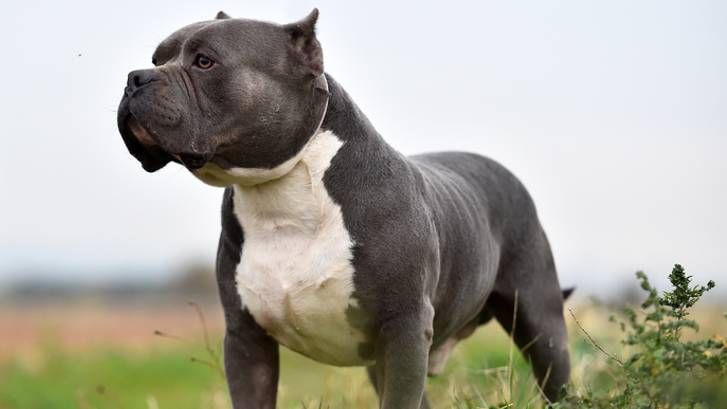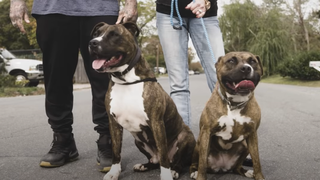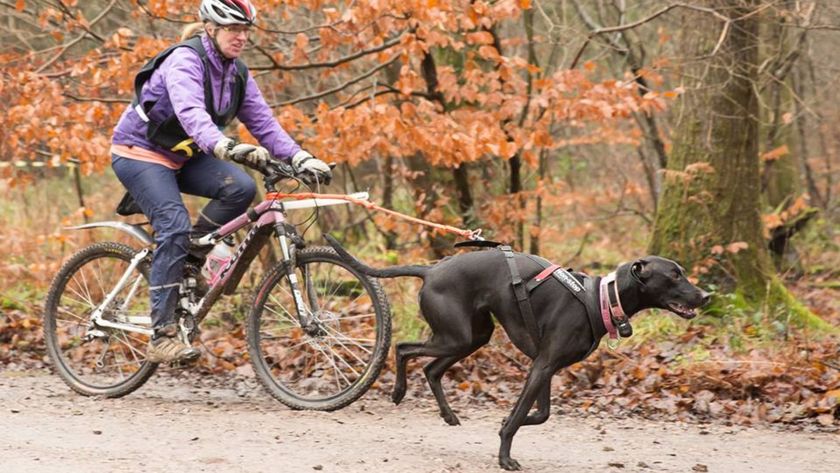Considered ‘sweethearts’ by some but dangerous enough to ban by others, American Bullies struggle to keep favor as ‘their breeding is variable, and so is their temperament’
It appears lots of people have an opinion about this breed but should you consider getting one?


Life expectancy: 8-13 years
Size: varies, depending on the breed type
Coat: Short, glossy, smooth
Temperament: Friendly, active, loyal, potentially aggressive
Exercise needs: Around an hour daily
Origin/native country: United States
Talk about American Bullies and people often think of the XL – the breed’s largest size and the one that often ends up in the news. There are three other sizes – pocket, standard and classic – and all exhibit the same, main characteristic: a large, broad head with a blocky muzzle and ears set high.
This American breed emerged in the United States in the 1980s and 1990s, based on the American Pit Bull Terrier. It is not recognized as a breed by the American Kennel Club, but was recognized in 2004 by the American Bully Kennel Club – and it’s fair to say controversy has followed.
The XL in particular has gained a reputation as a strong, aggressive dog and it’s led to bans and restrictions in some countries, including the UK. Yet to say all American Bullies are dangerous dogs just waiting for the opportunity to attack is far from true. Let’s take a look at this breed in greater detail with the help of expert vet Dr Rebecca MacMillan.
Are American Bullies aggressive?
It’s important to address the first question that most potential owners ask about American Bullies: are they considered to be aggressive? It’s a totally understandable query given how frequently this breed seems to appear in news reports – Bully XLs, the larger, more muscular breed, have been involved in some horrendous attacks on people.
There’s no doubt that, if an American Bully was to attack, it can cause a lot of damage and even death.
“The breed contains varying amounts of pit bull in its mix, a fighting and guard dog, and known for having a temperamental nature,” says vet Dr Rebecca MacMillan.
But that’s not to say the breed is inherently aggressive.
PetsRadar Newsletter
Get the best advice, tips and top tech for your beloved Pets
“They can show aggressive behavior if they have not been properly socialized or trained,” says vet Dr Rebecca MacMillan. It means potential owners must have the confidence, skills and knowledge of training in order to keep them in check.
What do I need to consider before getting an American Bully?
American Bullies are not recognised as a pedigree breed meaning there are no breed standards in place.
“This can lead to a big variation between individuals, in both looks and temperament,” says Dr MacMillan. “It is important to chat with your chosen breeder carefully to see what qualities they have selected for in their puppies.
“You should also be aware that some countries have banned certain bully breeds, such as the UK recently banning American XL Bullies. If your chosen dog has the physical characteristics of a banned breed, then you will not be able to travel to that country with them and could be breaking local laws by owning it.”
Does an American Bully need a lot of exercise?
American Bullies need to be exercised each day and it’s important to get them outside because they can display signs of destructive behavior if they remain indoors for too long.
Depending on where you live and the type of American Bully you have, you may need to place a muzzle over their face when you’re out in public but you can still take them for walks and runs to burn off their excess energy.
“American Bullies require moderate amounts of exercise,” says Dr MacMillan. “Most of them are happy with up to 60 minutes of exercise each day, depending on age and health status.”
Ideally, you’d have a secure area for them to play in. You can engage in games of tug-of-war and fetch, for example, which helps to keep their mind active too. Good play sessions lead to greater bonds and it helps to build and maintain muscle.

Are American Bullies easy to train?
Due to the variation in breeding, trainability may vary from dog to dog but, one thing’s for sure, training is absolutely necessary.
“These dogs need early socialization and training to ensure they don’t develop issues,” says Dr MacMillan. “They are big, powerful dogs so appropriate training while they are young is essential.”
Use positive reinforcement and learn how to leash train a puppy but keep training sessions short and fun. It may be a good idea to engage them in training classes. At all times, remain patient and keep them calm.
“Training must be positive and consistent, rewarding desirable behaviors,” affirms Dr MacMillan.
Do American Bullies make good family pets?
American Bullies can be gentle and affectionate when they’re properly trained and socialized. They are also friendly and so can be a good fit in a family home. But you should still think carefully.
“While some American Bullies can be sweethearts, I personally think there are better choices out there, especially if you have young children,” says Dr MacMillan.
“As their breeding is variable, so is their temperament. Their muscular stature and strength also mean that little ones could be easily knocked over.
“They would be better suited to a family with older children or teenagers who could help with their training and care. I would certainly always advise supervision around minors.”
Do American Bullies need a lot of grooming?
American Bullies have short, glossy coats and, with regular brushing, you will able to keep it clean and in good short. You only need to bath an American Bully every couple of months or so but keep their nails trimmed and ensure their ears and teeth are cleaned and brushed. American Bullies don’t shed excessively.
Common health problems in an American Bully
Although generally healthy, American Bullies do have some common health problems.
“Like many dogs, American Bullies are prone to hip and elbow dysplasia,” says Dr MacMillan. “Affected joints don’t form properly as the puppy grows, leading to pain and lameness.
“Skin allergies also seem very common in this breed, which go hand in hand with problems like recurrent ear infections. Large deep-chested dogs like the American Bully are at increased risk from gastric dilatation-volvulus (GDV). This is an emergency where the stomach bloats and twists on itself.”
Should I get an American Bully dog?
Whether or not you should get an American Bully (assuming your local dog ownership laws allow) depends on their breed variation and background – it’s important you talk to a breeder about a puppy’s history.
Equally, you need to be aware of the need for training and exercise and be aware of the potential problems. It’s a tricky one.
American Bullies can be friendly and sweet, happy to spend time snuggling in to you and proving lots of love. But they can also behave very badly. In general, only get one if you are sure you can spend sufficient time training them well.
American Bully: Admirers’ Guide To The Breed | Amazon
This book includes a quick look at the breed’s history, goes over the different styles of American Bullies there are, explains what sets them apart and helps you decide which type fits your lifestyle the best.

Rebecca is a veterinary surgeon who graduated in 2009 from the Royal Veterinary College in London. She has a wealth of experience in first opinion small animal practice, having done a mixture of day-to-day routine work, on-call emergency duties and managerial roles over the years. Rebecca enjoys medicine in particular and she is proud to have recently achieved a BSAVA postgraduate certificate in small animal medicine (with commendation).
She writes on various feline and canine topics, including behavior, nutrition, and health. Outside of work and writing she enjoys walking her own dog, spending time with her young family and baking!
Edited by Georgia Guerin.
Recent updates
This feature was last updated on April 7, 2025.

David Crookes has been a journalist for almost 30 years and he has written for a host of magazines, newspapers, websites and books including the World of Animals Annual, BBC Earth, Live Science, The Independent and Tom’s Guide.
Born in England, he lives with two cats but he’s also keenly interested in the differences between the huge number of dog breeds — in fact, you can read many of his breed guides here on PetsRadar.
With a lifelong passion for technology, too, he’s always on the lookout for useful devices that will allow people to keep their pets happier and healthier, and provide them more time to spend together.











